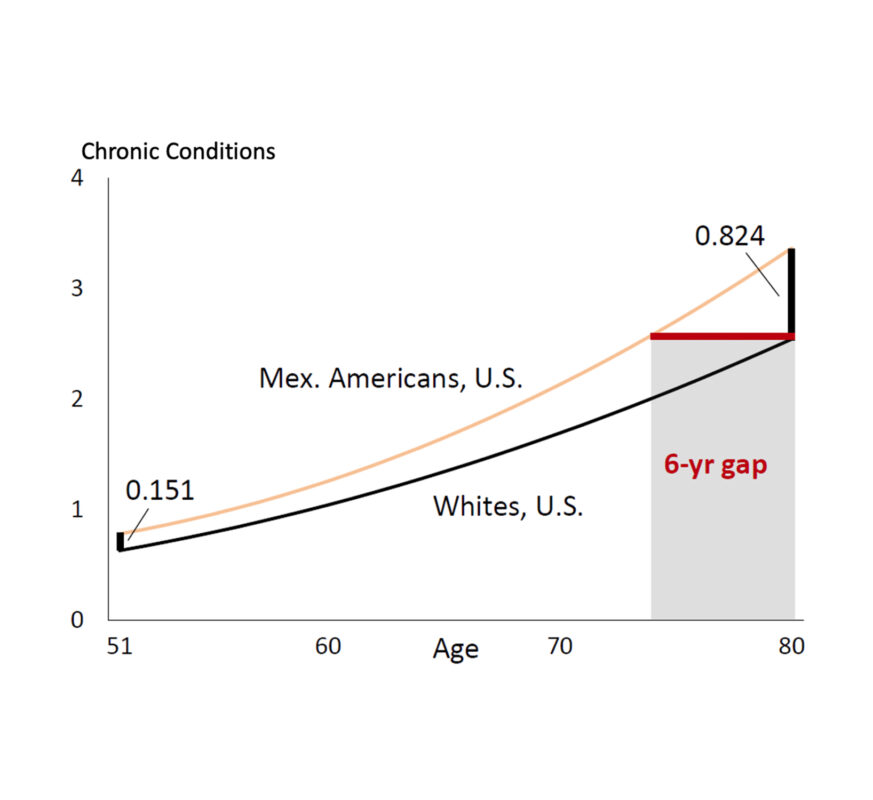Racial Stratification, Immigration, and Health Inequality: A Life Course-Intersectional Approach
In this article, Brown reveals how health disparities among US- and foreign-born white, Black, and Mexican Americans change as they age.
Summary:
In this article, Brown examines the data from the longitudinal Health and Retirement Study to understand health disparities among US- and foreign-born white, Black, and Mexican Americans as they age. While previous scholarship has analyzed health disparities between racial groups and between native and immigrant populations, Brown looks at the intersection of these factors throughout the aging process.
The study provides further evidence for the well-supported theory that minoritized US populations age prematurely — even when controlling for factors such as socioeconomic status, health behaviors, and medical care. Its findings also largely support the cumulative disadvantage hypothesis, which holds that health disparities between racial groups tend to increase as people age.
With respect to nativity, Brown observes how the immigrant health advantage — the pattern of immigrants to the US enjoying better health than their US-born counterparts — plays out over time. The data suggests that white immigrants to the US have better health than US-born whites throughout their lives. Meanwhile, although Black and Mexican immigrants initially have a health advantage over US natives of the same racial groups, this advantage fades, perhaps as a result of exposure to racism and anti-immigrant biases.
Brown demonstrates that no existing theory of how disparities change during aging applies uniformly across race and immigrant groups. Thus, the study shows the need for the factors of race and immigration to be viewed together and over time to better understand patterns of health disparities during aging.
Brown, Tyson H. 2018. “Racial Stratification, Immigration, and Health Inequality: A Life Course-Intersectional Approach.” Social Forces 96(4):1507–1540.

